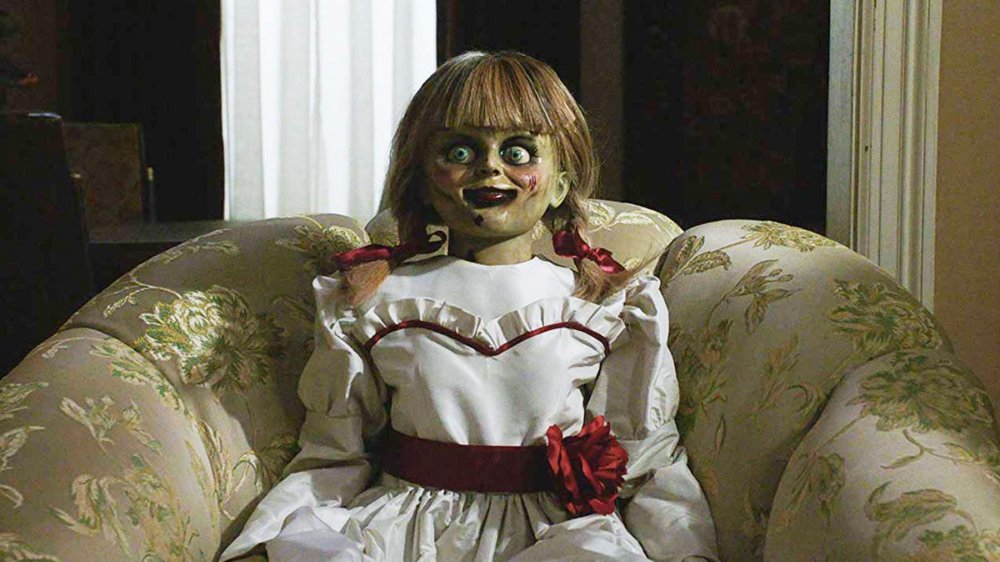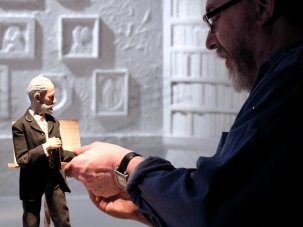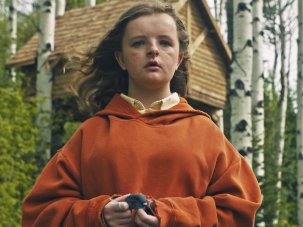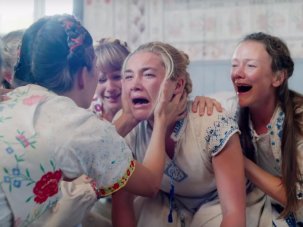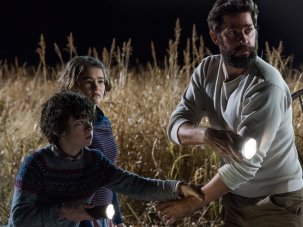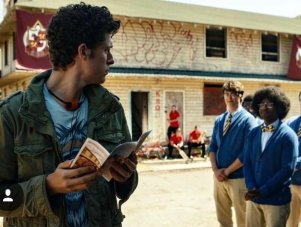This latest entry in the ever-expanding franchise of the ‘Conjuring Universe’ is dedicated to the real-life (and controversial) ghost hunter Lorraine Warren, who died earlier this year, in the way that Avengers: Endgame is dedicated to Stan Lee. The two Conjuring films are based – at least loosely – on incidents that Warren and her husband Ed investigated before their most famous case, the Amityville Haunting (though, notably, the longer-lasting Amityville Horror franchise minimises or eliminates their involvement). In the manner of the eye-catching starlet building a career on the sort of appearance Marilyn Monroe made in All About Eve (1950), the breakout presence of The Conjuring (2013) was Annabelle, an evil-looking doll found in a roomful of other cursed impedimenta in the Warrens’ headquarters. The china-faced child-hag scared up her own spin-off, Annabelle (2014), and a prequel origin story, Annabelle: Creation (2017), and is now back where we first met her, doing her best shiny Joker smile in the Warrens’ Arkham Asylum-like repository of conquered foes.
USA 2019
Certificate 15 106 mins approx
Director Gary Dauberman
Cast
Lorraine Warren Vera Farmiga
Ed Warren Patrick Wilson
Judy Warren Mckenna Grace
Mary Ellen Madison Iseman
Daniela Rios Katie Sarife
Bob Palmeri Michael Cimino
Bee Samara Lee
[2.39:1]
UK release date 10 July 2019
Distributor Warner Bros
annabelle3movietickets.co.uk
► Trailer
Not possessed but a focus for evil spirits that seek to claim the souls of others, Annabelle is inevitably freed from her prison – and promptly marshals an array of other apparitions against the Warrens’ daughter Judy and her ill-advised babysitters. With series regulars Vera Farmiga and Patrick Wilson away on the Warrens’ mysterious business, the leading lady is babysitter Mary Ellen – played by Madison Iseman, who comes to this universe logically after graduating from last year’s Goosebumps 2: Haunted Halloween.
If that was grade-school horror, then Annabelle Comes Home is middle-school horror in its near-perfect form. The young protagonists are all appealing, believable and more complicated than they seem – Katie Sarife’s ‘fun girl’ Daniela, who is responsible for letting the doll out of her blessed case, has a backstory that makes her foolishness understandable; and young Judy, played by Mckenna Grace (‘young Carol’ in Captain Marvel, ‘young Sabrina’ in Chilling Adventures of Sabrina and ‘young Theo’ in The Haunting of Hill House), is already flexing the psychic prowess she’s inherited from her mother.
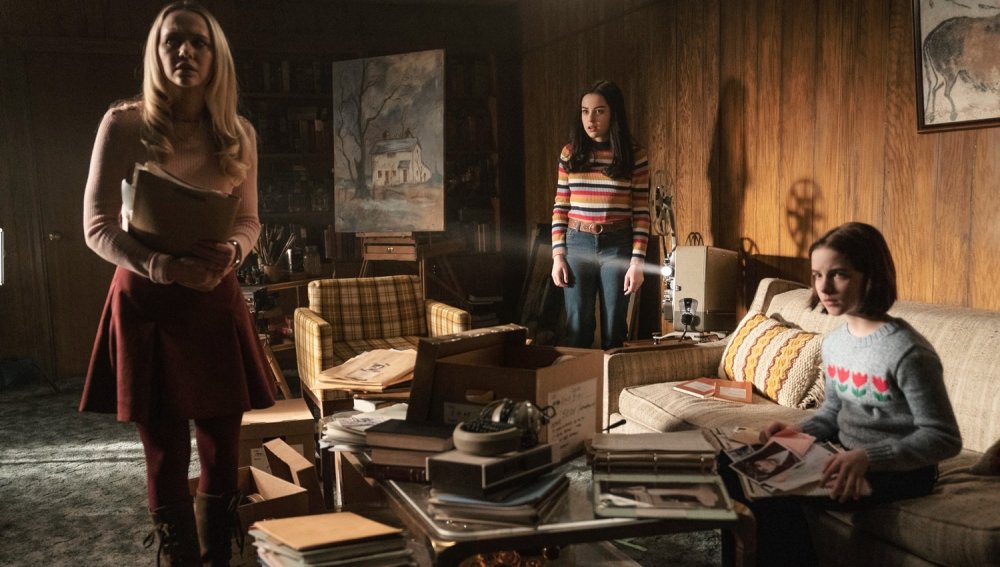
Madison Iseman as Mary Ellen, Katie Sarife as Daniela Rios and Mckenna Grace as Judy Warren
Though it takes care to pick up from the coda of Annabelle and find room for a creepy cameo from Samara Lee in her role from Annabelle: Creation, this is less focused on its star turn than the other spin-offs. The home Annabelle comes back to isn’t where she was cursed, but where we first saw her, and her ability to channel demons and evil spirits means there are sequences that serve as potential audition pieces for future Conjuring add-ons to follow The Nun (2018) and The Curse of La Llorona (2019). Let loose are an Essex werewolf called Black Shuck, a suit of Japanese armour, a bloodied wedding dress that turns the wearer violent and a primitive, disturbing television set.
Gary Dauberman, making his directorial debut after scripting previous entries, stages the shudders and shocks with some imagination – the bloody bride walking past windows and through mirrors, the television showing a few seconds into the future, where Daniela is more afraid than she is now – and enough ferocity to cover the fact that this is going to be all stalk and no slash.
Though not bloodless, this has the lowest body count (apparently zero) in recent horror – which would defang it completely if it weren’t for the grasp the film has on grief and social anxiety as a means to conjure monsters. The gap between now and the world of the Conjuring Universe is almost exactly that between Dr Jekyll and Mr Hyde (1931) – one of the first nostalgia-appeal horror films – and the foggy Victorian London of Stevenson, Stoker and Conan Doyle. The series uses its period (from the 1950s to the 1970s) as a cosy yet chilling fantasy past, as bubblegum pop, novelty children’s toys, groovy fashions and an uncynical embrace of the magical whip up phantom nostalgia for an era within living memory of the target audience’s grandparents.
-
The Digital Edition and Archive quick link
Log in here to your digital edition and archive subscription, take a look at the packages on offer and buy a subscription.




